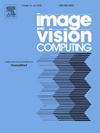AwareTrack: Object awareness for visual tracking via templates interaction
IF 4.2
3区 计算机科学
Q2 COMPUTER SCIENCE, ARTIFICIAL INTELLIGENCE
引用次数: 0
Abstract
Current popular trackers, whether based on the Siamese network or Transformer, have focused their main work on relation modeling between the template and the search area, and on the design of the tracking head, neglecting the fundamental element of tracking, the template. Templates are often mixed with too much background information, which can interfere with the extraction of template features. To address the above issue, a template object-aware tracker (AwareTrack) is proposed. Through the information interaction between multiple templates, the attention of the templates can be truly focused on the object itself, and the background interference can be suppressed. To ensure that the foreground objects of the templates have the same appearance to the greatest extent, the concept of awareness templates is proposed, which consists of two close frames. In addition, an awareness templates sampling method based on similarity discrimination via Siamese network is also proposed, which adaptively determines the interval between two awareness templates, ensure the maximization of background differences in the awareness templates. Meanwhile, online updates to the awareness templates ensure that our tracker has access to the most recent features of the foreground object. Our AwareTrack achieves state-of-the-art performance on multiple benchmarks, particularly on the one-shot tracking benchmark GOT-10k, achieving the AO of 78.1%, which is a 4.4% improvement over OSTrack-384.
求助全文
约1分钟内获得全文
求助全文
来源期刊

Image and Vision Computing
工程技术-工程:电子与电气
CiteScore
8.50
自引率
8.50%
发文量
143
审稿时长
7.8 months
期刊介绍:
Image and Vision Computing has as a primary aim the provision of an effective medium of interchange for the results of high quality theoretical and applied research fundamental to all aspects of image interpretation and computer vision. The journal publishes work that proposes new image interpretation and computer vision methodology or addresses the application of such methods to real world scenes. It seeks to strengthen a deeper understanding in the discipline by encouraging the quantitative comparison and performance evaluation of the proposed methodology. The coverage includes: image interpretation, scene modelling, object recognition and tracking, shape analysis, monitoring and surveillance, active vision and robotic systems, SLAM, biologically-inspired computer vision, motion analysis, stereo vision, document image understanding, character and handwritten text recognition, face and gesture recognition, biometrics, vision-based human-computer interaction, human activity and behavior understanding, data fusion from multiple sensor inputs, image databases.
 求助内容:
求助内容: 应助结果提醒方式:
应助结果提醒方式:


